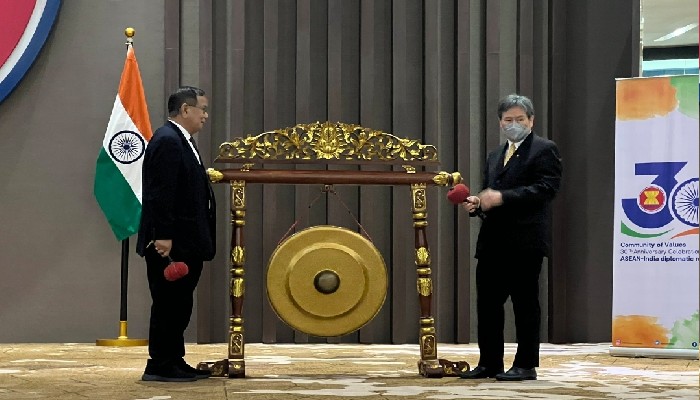MoS External Affairs is on his first visit to Indonesia
ASEAN is strategically and geographically the centre of the Indo-Pacific region, India's Minister of State for External Affairs Rajkumar Ranjan Singh, stated on Monday.
ASEAN is not only a crucial "gateway" into and out of the Indian Ocean but is also one of the most "dynamic" areas in the world right now, with its own ASEAN Outlook on the Indo-Pacific (AOIP), he pointed out.
Speaking at the Inauguration of the ASEAN-India Network of Universities (AINU) at Jakarta, Indonesia, Mos Singh said, "India envisages the ASEAN to be at the centre of the Indo-Pacific, both literally and substantively. Our interactions with ASEAN as a whole as well as with individual ASEAN countries have grown as a result of our Indo-Pacific Vision".
He pointed out that India's trade with all ASEAN countries, for the last financial year touched the all-time high of USD 110 billion, which is 10 % of the country's global trade. Both inflow and outflow of Overseas Direct Investment between India and ASEAN countries also stand at around 20% of the total.
"Review of ASEAN India Trade in Goods Agreement remains high on our agenda to enhance our bilateral trade relations," he added.
Speaking about AINU, he stated that it is envisioned as a cooperation of leading academic and research institutions from India and ASEAN that will create a core network of knowledge capital through strategic alliances between these institutions.
He further noted that as we get ready for a post-pandemic, 21st-century-ready economic and developmental route where knowledge and education are key, a "Collective Knowledge Network" with ASEAN becomes even more crucial.
Speaking of the cooperation between ASEAN and India, he stated that it is based on a set of core shared principles, the most fundamental of which is the importance that our cultures place on education.
He continued by saying that a common search for knowledge has traditionally contributed to the development of India's relationship with the countries of Southeast Asia.
Noting how commerce and political relations between India and South-Asian nations have followed the roads and sea routes established by monks, saints, and intellectuals, he added that it is only natural that knowledge continues to be the primary force behind people-to-people connections in the present period.
 Contact Us
Contact Us  Subscribe Us
Subscribe Us









 Contact Us
Contact Us
 Subscribe
Subscribe
 News Letter
News Letter

